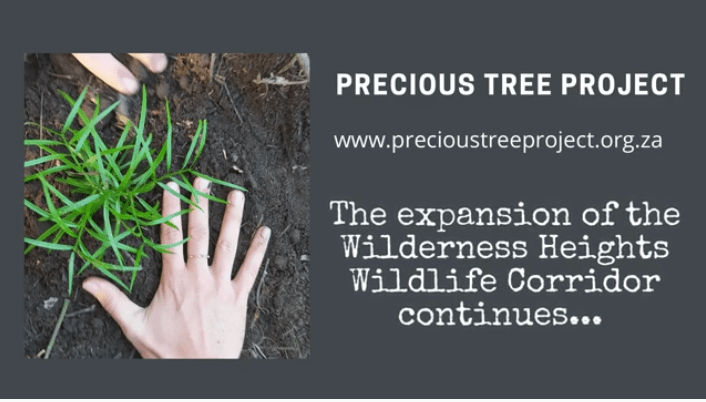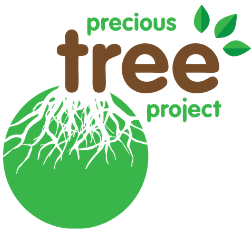
We have been assisting the natural reforestation of this Wildlife Corridor in Wilderness Heights for the past 18 months through the continuous process of clearing patches of invasive trees (primarily wattle and Australian blackwood), and then planting out patches of a range of endemic forest tree species (emulating the larger afromontane forest biome of the area). It is a labour intensive process and not a simple one – particularly so when the primary consideration is to assist the reforestation and regeneration process as naturally as possible. The clearing process is a pre-planned one that goes hand-in-hand with the planting process.
Clearing an infestation of wattle is not about going in and cutting every invasive tree down in one fowl swoop before planting can take place. It involves more of a “thinning-out-to-clear” process, which includes cutting/chopping, hand-pulling (roots-and-all) and ringbarking. The method we employ to eradicate wattle is determined by the size of the tree at the time and is designed to assist the natural regeneration process … not hinder it.
Scraps of biodegrading wattle left behind from the clearing stage provide ground cover on the forest floor and mulch for the trees, both of which reduce evaporation at ground level.
Ringbarking the taller wattle and leaving them in situ, while they slowly die off, helps retain the overhead canopy that provides protection (from the elements) to the newly planted trees. In addition, they “stand in” as protective cover while the faster growing pioneers (keurbooms) shoot up under their shade without having to compete with them for water. The wattle will eventually be cut down and used as a resource once the Keurbooms have grown tall enough to provide their own protective canopy for the other underlying, comparatively slower-growing forest trees.
Clearing a site completely prior to planting would hinder the process insofar as it would create a barren space where too much sunlight penetrating to ground level, precipitating a rapid sprouting of seeds (mostly wattle at this point) post any rainfall.
Planting only happens once a patch has been thinned out sufficiently to allow the easy growth of new trees. We have planted out twenty different species of forest trees over and above the Keurbooms in this corridor – each growing at different paces, reaching different heights and boosting one another through their underground communication systems, while above-ground they provide a seasonal source of food and a haven for our wildlife as the forest grows and matures.
Continuous maintenance and “pulling” of wattle saplings/seedlings within the newly planted forest patch is essential and an ongoing necessary process until the indigenous forest trees have established themselves as the dominant species.
Yes, it is a labour intensive process but a rewarding one when we see the results!
Thank you to all our sponsors who make the expansion of this wildlife corridor possible!
If you would like to help expand this wildlife corridor, click here!
#clearinginvasivewattle #biomimickedforests #precioustreeproject #wildlifecorridor #gardenroutereforestation #treeplanting #indigenoustrees #endemictrees #foresttrees

